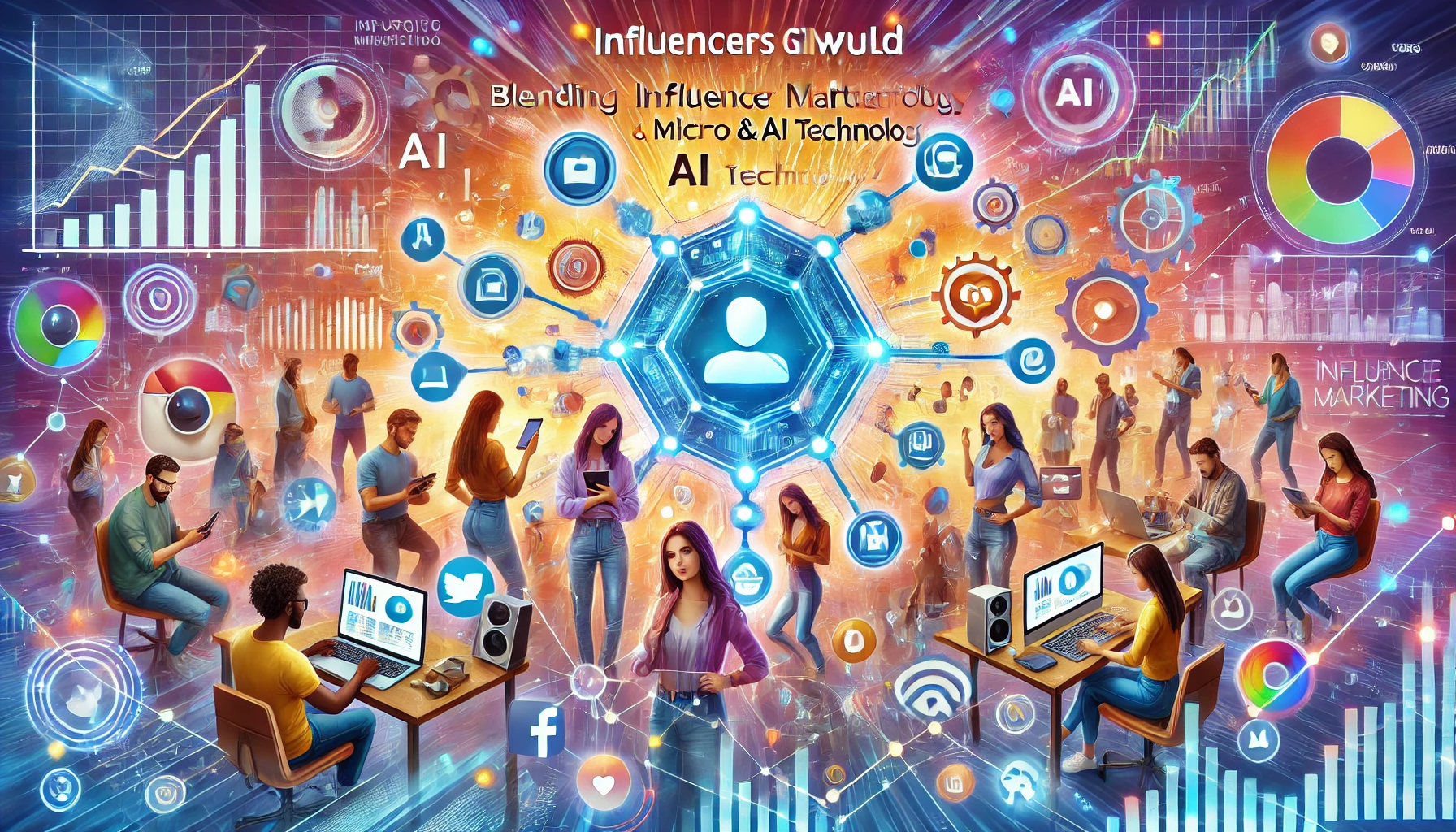In the vast, ever-evolving world of digital marketing, trends come and go faster than a cat meme. But one trend that’s gaining serious traction and proving to be more than a passing fad is Influencersginewuld. It’s a big name for an even bigger idea, bringing together the best of influencer marketing with some serious tech power. Get ready, because we’re about to dive into the world of Influencersginewuld—where AI, micro-influencers, and killer ROI come together like never before.
1. What is Influencersginewuld?
If you’re scratching your head, wondering what on earth Influencersginewuld means, don’t worry—you’re not alone. This futuristic-sounding term refers to the blending of traditional influencer marketing with cutting-edge AI-driven tools and analytics. Think of it as influencer marketing, but supercharged. Instead of just paying a social media personality to hawk your products, Influencersginewuld uses AI to help brands make smarter, data-backed decisions about who to work with, what content to create, and how to get the best bang for their buck.
It’s like having a crystal ball that helps you predict which influencers will give you the most engagement, which content will go viral, and where to focus your budget. Sounds pretty cool, right? Well, that’s just the beginning.
2. The Rise of Micro and Nano-Influencers
Gone are the days when big brands only cared about massive celebrity influencers. Sure, it’s nice when a mega-star posts about your product, but let’s face it—most of us can’t afford that. Enter micro-influencers and nano-influencers—the unsung heroes of Influencersginewuld.
- Micro-influencers typically have between 10,000 to 100,000 followers, but don’t let their smaller numbers fool you. These influencers often have far more engaged audiences than their celebrity counterparts.
- Nano-influencers take it a step further, with fewer than 10,000 followers. They’re your everyday people with deep connections to their niche communities, and they bring a sense of authenticity and trust that larger influencers sometimes lack.
These influencers offer brands the chance to connect with more targeted, engaged audiences, making their marketing efforts feel less like an ad and more like a recommendation from a trusted friend.
3. How AI and Data Analytics Empower Influencersginewuld
Now, here’s where the tech magic comes in. AI isn’t just for creating creepy robot videos anymore—it’s become a crucial part of marketing strategies. With Influencersginewuld, brands aren’t throwing spaghetti at the wall to see what sticks. Instead, AI tools analyze vast amounts of data to make informed decisions.
- AI-Powered Influencer Selection: AI crunches data from followers’ demographics, past engagement rates, and content sentiment to ensure that brands choose influencers who align perfectly with their audience.
- Content Personalization: AI can help influencers and brands tailor content that resonates more with their target audience, improving engagement rates and making sure the message doesn’t get lost in the noise.
- Real-Time Adjustments: One of the coolest aspects? You can track campaigns in real-time. If something isn’t working, brands can tweak their strategy mid-campaign, ensuring maximum impact. No more “set it and forget it”—Influencersginewuld thrives on flexibility and adaptability.
4. Benefits of Influencersginewuld for Brands
The combination of influencers, AI, and data analytics doesn’t just sound fancy—it actually delivers tangible results for brands. Here’s why so many companies are jumping on the Influencersginewuld bandwagon:
- Improved ROI: Traditional influencer marketing often felt like a shot in the dark. With Influencersginewuld, brands have the data to back up their decisions, leading to better engagement and, ultimately, higher returns on their investment.
- Scalability: Whether you’re a small business or a global brand, Influencersginewuld makes it easier to scale campaigns. AI tools can manage hundreds of influencers simultaneously, ensuring consistent messaging across multiple platforms.
- Targeted Marketing: Gone are the days of throwing money at the biggest influencer you can afford and hoping for the best. Now, with precise data, brands can target the exact audience they want, ensuring their message hits home.
5. Challenges of Influencersginewuld
Of course, no trend is without its challenges, and Influencersginewuld is no exception. While it’s a powerful tool, there are some potential pitfalls that brands need to be aware of.
- Authenticity: As AI takes on a larger role in influencer marketing, there’s a risk of losing that human touch. After all, influencers are popular because their audiences trust them, and overly automated campaigns can feel impersonal.
- Data Privacy: With great data comes great responsibility. Brands need to ensure they’re using their audience’s data responsibly and ethically—especially in an age when privacy concerns are top of mind for consumers.
- Over-Saturation: The influencer space is getting crowded, and there’s a danger of over-saturation. When every brand is using the same strategy, it can be hard to stand out.
6. Influencersginewuld vs. Traditional Influencer Marketing
So how does Influencersginewuld compare to old-school influencer marketing? In short, it’s like comparing a flip phone to the latest smartphone.
- Traditional Influencer Marketing: In the past, brands would simply pay a celebrity or social media star to post about their product, with little data to back up the decision. The results were often hit or miss.
- Influencersginewuld: By leveraging AI and data analytics, brands can now make smarter choices, resulting in more targeted campaigns, higher engagement, and better ROI. Plus, the ability to track and adjust campaigns in real-time means there’s no need to guess what’s working.
7. Future Trends in Influencersginewuld
Looking ahead, the Influencersginewuld trend shows no signs of slowing down. If anything, it’s only going to get bigger and better. Here’s what the future might hold:
- AI Evolution: As AI technology continues to improve, we can expect even more advanced tools for analyzing data and creating personalized content.
- Cross-Platform Integration: Brands will increasingly need to create seamless campaigns across multiple social media platforms, ensuring consistent messaging everywhere their audience interacts with them.
- Long-Term Influencer Partnerships: Instead of one-off campaigns, we’re likely to see more long-term relationships between brands and influencers, powered by data that shows which influencers deliver the best results over time.
Conclusion: Why Influencersginewuld is the Future of Marketing
In conclusion, Influencersginewuld isn’t just the next big thing in influencer marketing—it’s the future. By combining the authenticity of influencers with the power of AI and data analytics, brands can create campaigns that resonate with their audience, deliver high ROI, and adapt in real-time. So, if you’re not already exploring the world of Influencersginewuld, it might be time to hop on board. Your future customers (and your marketing budget) will thank you.





